Key takeaways:
- Cryptocurrency operates on blockchain technology, offering users control over their finances and the ability to invest with small amounts.
- Financial literacy is essential for making informed investment decisions, understanding market dynamics, and managing personal finances effectively.
- Embracing setbacks as learning opportunities fosters resilience and a long-term perspective in investing, emphasizing steady growth over quick gains.
- Developing a risk management strategy, including diversification and regular portfolio reviews, is crucial to safeguard investments in the volatile crypto market.

Understanding cryptocurrency basics
Cryptocurrency is a digital form of money that operates independently of a central authority, such as a bank or government. I remember the first time I heard about Bitcoin; it felt like discovering a hidden treasure. The thought of having my money work differently sparked my curiosity, but it also raised questions—how does it work, and why is it valuable?
At its core, cryptocurrency relies on blockchain technology, which is a secure and transparent way to record transactions. When I first learned about how each transaction is verified by a network of computers, it clicked for me. Isn’t it fascinating that this decentralized system not only reduces fraud but also empowers users like you and me to take control of our finances?
One of the standout features of cryptocurrency is that it can be bought in fractions, meaning you don’t need a lot of money to start. When I decided to invest just a small amount, I felt a mix of excitement and anxiety. Have you ever thought about how easy it could be to dabble in this digital economy without breaking the bank? That’s one of the most appealing aspects for beginners.
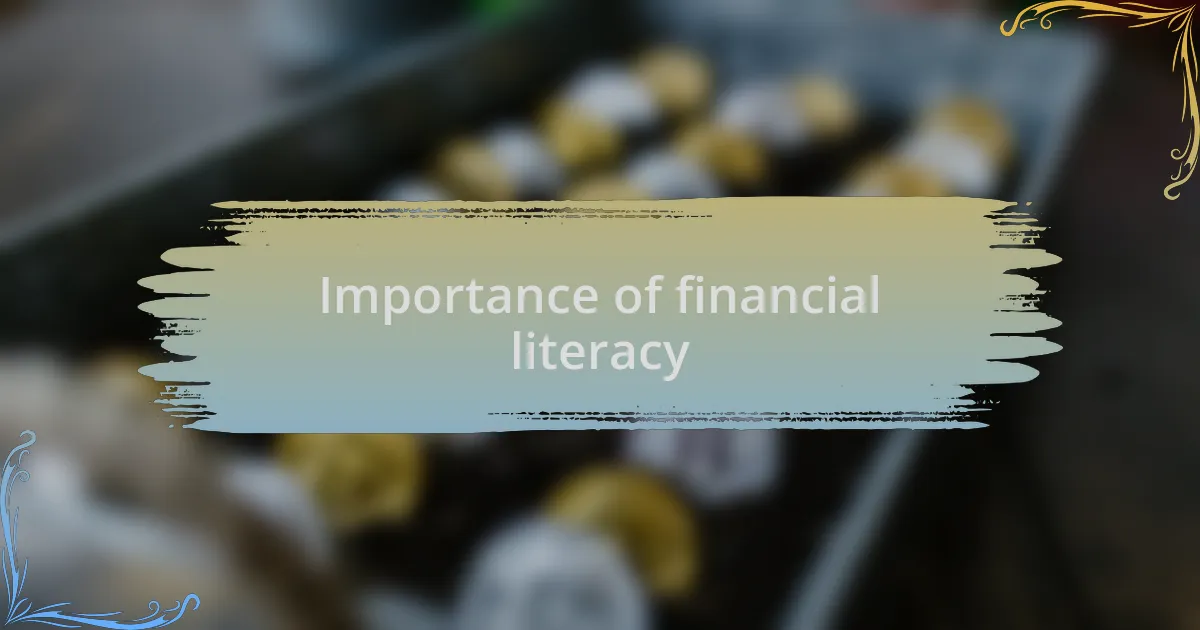
Importance of financial literacy
Financial literacy is like a toolkit for understanding money, investment, and risk—especially in the world of cryptocurrency. When I began exploring cryptocurrencies, I quickly realized that being financially literate helps me make informed decisions rather than impulsively jumping into trends. Have you ever felt overwhelmed by the flood of information? I know I have, but knowing the basics can simplify the complex, allowing for more confident choices.
As I navigated my early crypto investments, I found that understanding terms like “volatility” and “diversification” was crucial. These concepts aren’t just for traditional investing; they matter in crypto too. I remember losing some initial funds due to not recognizing how quickly prices could change. How could I have avoided that? Paying attention to market trends and educating myself on what drives these changes would have made a noticeable difference.
Another aspect I appreciate now is the importance of budgeting and saving before diving into crypto investments. In the beginning, I often treated my investment budget like play money, thinking I could easily recover losses. However, understanding the significance of allocating a portion of my finances specifically for investments made the experience less stressful. Have you considered how setting clear financial goals can guide you through uncharted waters like cryptocurrency? It has certainly shaped my approach, providing a sense of structure in a sometimes chaotic space.
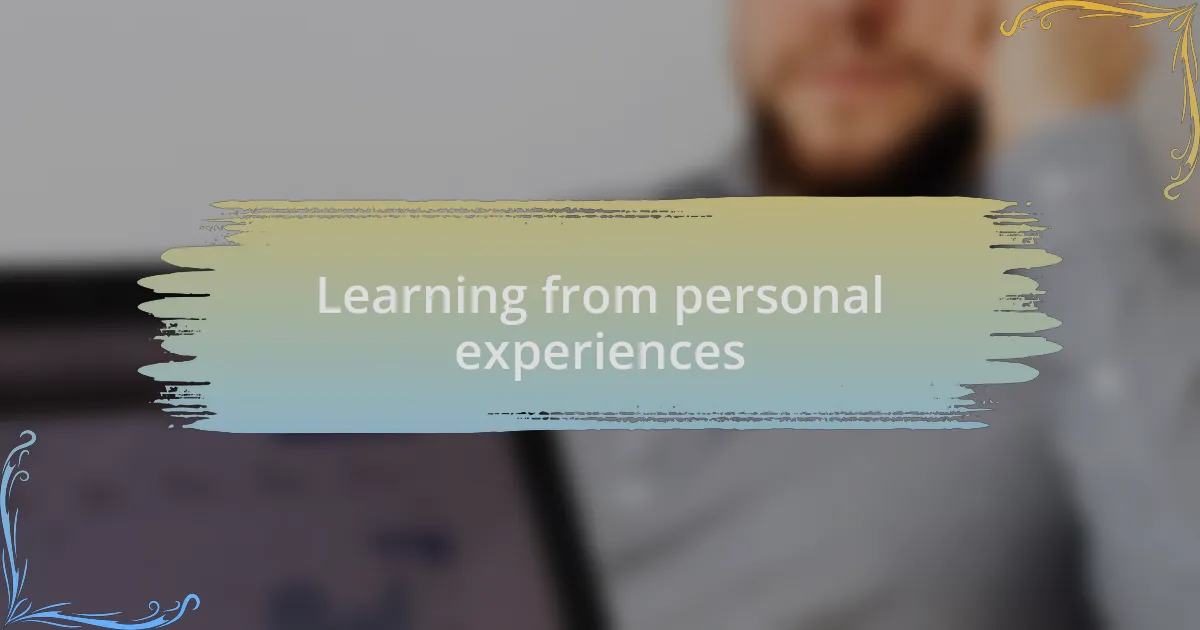
Learning from personal experiences
As I reflect on my journey with crypto, I’ve learned that setbacks can be profound teachers. In one instance, a sudden market crash wiped out a sizable chunk of my investment. I felt devastated, but it pushed me to dive deeper into my research and understand how market sentiments work. Have you ever faced a moment that made you rethink your approach? For me, that crash became a catalyst for improvement.
Through these experiences, I’ve discovered the value of sharing lessons with others. When I opened up about my losses, others shared their own stories, creating a supportive community. Isn’t it fascinating how vulnerability can foster connection? It turned my mistakes into valuable conversations, offering insights and strategies that I could have never uncovered on my own.
In hindsight, I realize that every loss came with a lesson that made me more resilient. I’ve learned the importance of patience and the need to develop a long-term perspective. Instead of obsessing over daily price changes, I began to focus on my overall strategy. Can you imagine how different my mindset would have been if I had embraced this sooner? These reflections have been essential in shaping not just my investing habits but my outlook on financial growth.
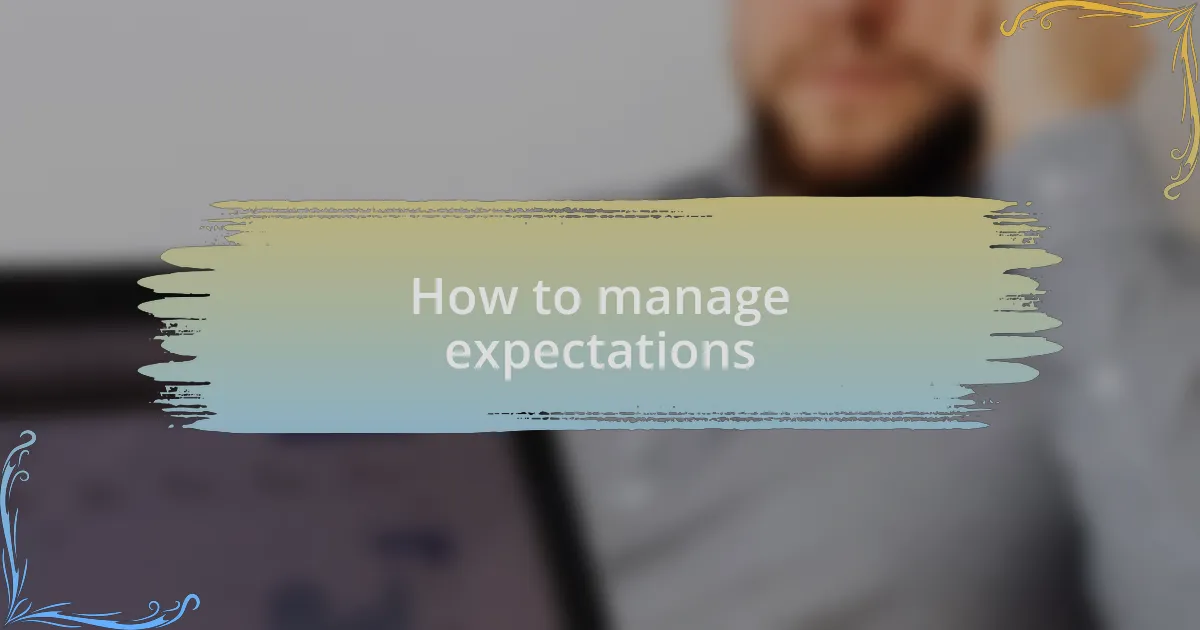
How to manage expectations
Managing expectations in the world of crypto is crucial. When I first dipped my toes into the market, I was caught up in stories of people becoming instant millionaires. That excitement led me to invest more than I should have, thinking I’d see quick returns. Have you ever felt that rush of anticipation? It taught me that hoping for rapid gains often leads to disappointment and potential losses.
I learned that setting realistic goals is essential. Instead of aiming for the moon, I began to focus on gradual growth and understanding. For instance, I once anticipated a 50% return in a month, only to be met with a downturn. That experience shifted my perspective. It made me realize that it’s better to seek steady progress rather than chase unrealistic returns. How about you? Have you recalibrated your expectations after a setback?
I also found it helpful to remind myself that volatility is part of the crypto game. Each time the market dipped, instead of panicking, I took a step back and analyzed the situation. I found that pausing allowed me to make informed decisions, rather than emotional ones. It’s a rollercoaster ride, isn’t it? But with the right mindset, those ups and downs can become valuable lessons in patience and strategy.
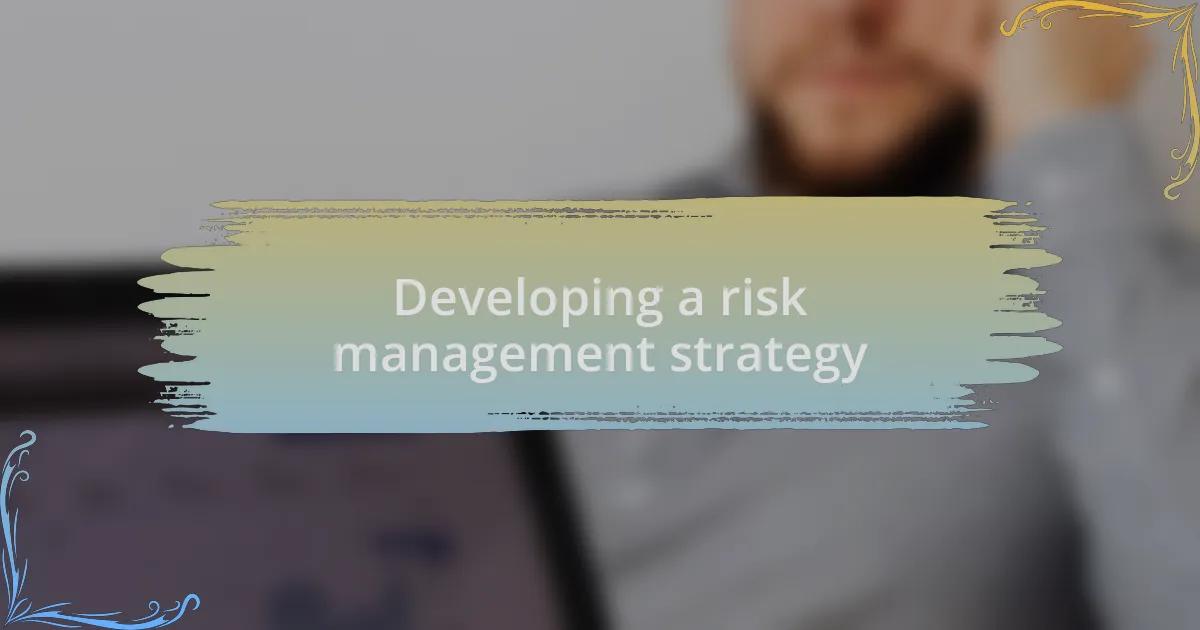
Developing a risk management strategy
Developing a risk management strategy is something I wish I had prioritized early on. In one instance, I invested in a token that saw a sudden surge, but without a strategy, I ended up losing a significant portion of my investment when it dropped sharply. Have you ever been so focused on potential gains that you overlooked potential pitfalls? I learned that having a plan in place, like setting stop-loss orders or allocating only a certain percentage of my portfolio to high-risk assets, could have safeguarded my investment.
I also started to diversify my investments as a key element of my risk management strategy. One time, after losing money in a single crypto asset, I decided to spread my investments across different coins and projects. This approach not only reduced the impact of any single loss but also helped me feel more in control. Have you thought about how diversifying your holdings could balance out those inevitable losses?
Moreover, I realized that keeping a close eye on my investments and staying informed about market trends is vital. After I experienced a notable loss, I committed to regularly reviewing my portfolio and adjusting my strategy based on new information. It’s like being a detective; the more clues you gather, the better decisions you can make. How often do you check in on your investments? Putting in that effort can truly pay off in the long run.
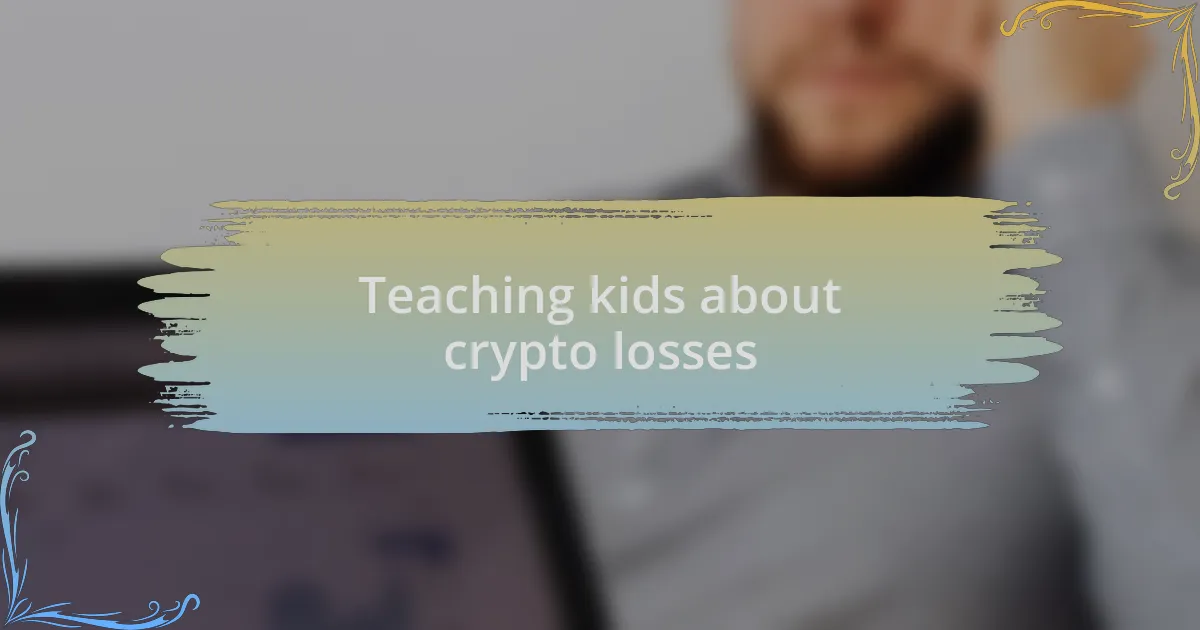
Teaching kids about crypto losses
Teaching kids about crypto losses is crucial for fostering a healthy understanding of risk. I remember the day I sat down with my younger sibling after losing some money in a crypto investment. Instead of just discussing the figures, I explained the feelings that came with that loss—the disappointment, the lessons learned, and how it shaped my future decisions. Have you ever considered how emotions can impact financial choices?
It’s important to make the concept of losses relatable to kids, so I often use examples that resonate with them. For instance, I liken it to losing a favorite toy or not winning a game – it hurts, but it also teaches resilience. I encourage children to reflect on their own experiences with disappointments and how those moments can lead to personal growth. By framing losses as opportunities to learn, we empower kids to face challenges head-on.
Additionally, I emphasize the importance of transparency about losing trades. When I first began talking to young learners about my crypto journey, I shared stories about my mistakes without glossing over them. This openness not only builds trust but also instills the idea that it’s okay to make mistakes as long as we learn from them. Wouldn’t it be liberating for kids to know that everyone faces setbacks, even in the world of crypto?